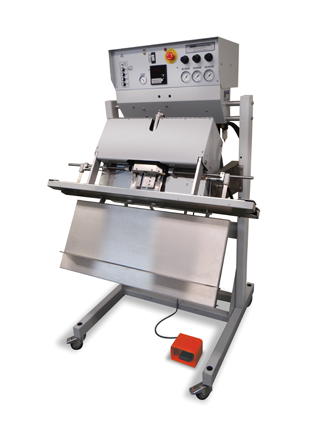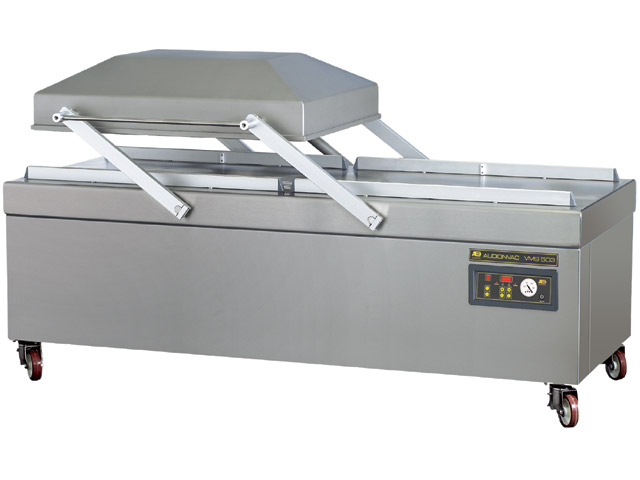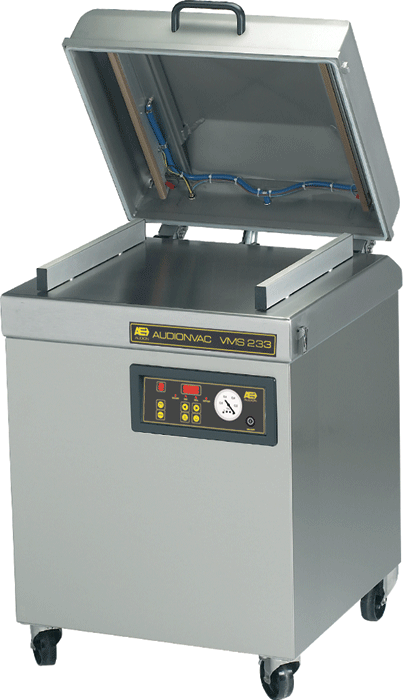A Vacuum Bag Sealer Overview
Keeping Your Products Sealed and Secure
A Vacuum bag sealer is a type of sealing equipment that uses a vacuum pump to create an airtight seal around a product. These machines help extend the shelf life of foods and other commodities by ensuring your product has an airtight seal. Some machines also offer a gas flush to even further the shelf life expiration date.
In this guide we will cover
- Types of vacuum bag sealers
- When to use a vacuum bag sealer
- How used vacuum bag sealers work
- What types of bags can you vacuum seal?
- Manufacturers we recommend
- Upstream and downstream equipment
- Questions to consider when buying a vacuum bag sealer
Types of vacuum bag sealers
There are three main types of vacuum bag sealers, nozzle, single chamber, and double chamber.



Nozzle Double chamber Single Chamber
Source: Pace Machinery
Nozzle Vacuum bag sealer
This type of sealer is best used for smaller products so that they will fit through the nozzle. If you have a larger bag that is not easily handled by a nozzle, a chamber machine is a good option for your production. Something to keep in mind about the nozzle vacuum bag sealer is that it’s a manual machine. Meaning an operator will need to hold and adjust pouches every time making the number of bags per cycle limited. If you’re looking for a higher speed, an alternative is a continuous band sealer. These can be configured by our engineering shop services for semi-automated or automated loading and can draw a vacuum.
Some benefits of the nozzle vacuum bag sealer are
- The machine can be used as just a sealer. Meaning, the nozzle machine operator can override the vacuum process and seal a bag without pulling a vacuum.
- The overall length of the bag is not a limiting factor
Chamber vacuum bag sealer
This type of sealer can come in two forms, single chamber or double chamber, and works best with products that contain small pieces or liquids. Chamber vacuum bag sealers are slower in speed, so if you need a higher output, you should look into using a nozzle vacuum bag sealer instead.
What’s the difference between a single chamber and a double chamber may you ask?
The primary difference between these two types of vacuum bag sealers is output. For example, with a double chamber, while one chamber is processing, the other can be loaded with products. Once the first chamber is finished, the lid can then be swung over to the second chamber and begin the vacuum process again. This allows for the operator to unload the first chamber and then repeat the cycle.
Some benefits of a chamber sealer vacuum bag are
- Greater oxygen vacuuming capability
- Bigger deal bar(s) to allow the operator to vacuum seal multiple pouches simultaneously
- The vacuum and sealing cycle is completely automatic
- Flexibility to work with both liquids and solids
When to use a vacuum bag sealer
All three of these types of vacuum bag sealers can be used for both food and non-food industries.
Food industry benefits include
- Shelf-life extension
- Prevention of cross-contamination
- Protection from dehydration, freezer burn, and mold
Non-food industry benefits include
- Protection from dirt, scratches, and moisture
- Volume reduction
- Fraud reduction
How used vacuum bag sealers work
A vacuum bag sealer uses a vacuum pump to create an airtight seal around a product. The lids of these machines are lined with a rubber material to ensure an impermeable seal. They also use seal bars to seal the film with heat.
The following cycle test shows a Koch Ultravac UV2100 Dual Chamber Vacuum Sealer running on a 208-volt system, three-phase, and also includes a 7.5 horsepower vacuum motor.
Here you will see that the product is manually put into the bag sealer’s chamber with the open side of the film pouch on the seal bar. The lid is then manually closed and the vacuum seal automatically begins. Since this specific machine is a double chamber, when one side is being used, the product can be placed into the other chamber to be ready for the next seal. If you’re working with packaging smaller items, you can use a filler plate to take up some of the unused chamber space. This will reduce the overall time needed to seal a bag since there is less air in the chamber.
What types of bags can you vacuum seal?
When looking for a bag to vacuum seal, you must first confirm that it’s a barrier bag. Some types of barrier bags include,
- Coextruded Poly/Nylon Woven Bags
- Coextruded Poly/Nylon w/EVOH Bags
- Foil/PET Bags
Manufacturers we recommend
- Multivac
- UltraSource
- Spiromac
- M-Tek
- Sealed Air
- Pac Machinery
Upstream and downstream equipment
For meat products, you will see the following upstream equipment.
- Vemags
- Injectors
- Grinders
- Tumblers
- Meat saws
For vegetable products, you will see the following upstream equipment
- Tumblers
- Washers
Downstream equipment for both meat and vegetable products are
- Shrink tunnels
- Cartoning equipment
- Labelers
Questions to consider when buying a vacuum bag sealer
- Are you looking for a chamber or an impulse bar?
- If you're looking for a vacuum chamber sealer, how many chambers do you need? Single or double?
- If you're looking for a vacuum chamber sealer, what distance between the seal bars does your product require?
- What length of a seal bar does your product require?
- What is your maximum bag size?
Summary
Vacuum bag sealers remove the air around a product and use a heated seal bar to fuse the film’s opening closed. Vacuum-sealed packaging is commonly used to extend the shelf life of foods, such as meat and fish but can also be used to keep non-food products protected from damage.
SIGMA both sells and buys a variety of vacuum bag sealers. Ready to begin working with our team of equipment experts today?
Looking to Buy Looking to Sell